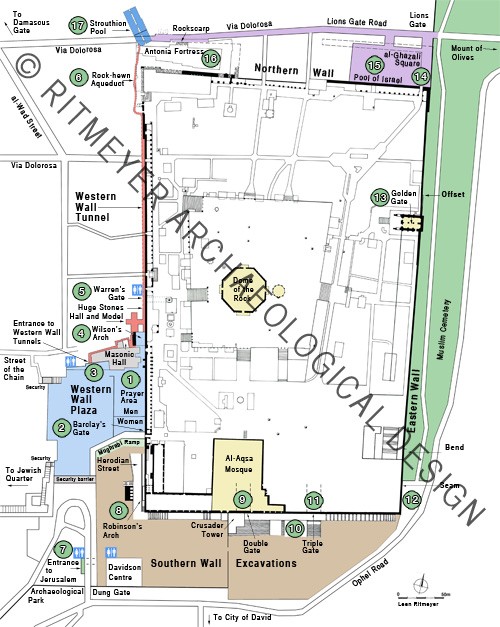This article delves into the significance of a new guide book focusing on the Temple Mount in Jerusalem, contrasting it with existing literature and highlighting its unique features. We’ll also touch upon the historical context, referencing the Supreme Muslim Council’s “Brief Guide to al-Haram al-Sharif,” published in 1925, and explore the value of such a resource, particularly in times when physical access to the site is limited.
Our subject is not just any guide book, but one designed to provide a comprehensive understanding of this historically and religiously significant site. It stands out as the first true guide book dedicated to the Temple Mount since the aforementioned 1925 publication.
The authors articulate their vision in the Preface:
It is the authors’ sincere hope that this profusely illustrated guide book to the Temple Mount will help you to fully savor the experience of visiting a site that is truly without parallel and be embraced by its aura of power and sanctity. It is the culmination of years of academic work distilled into a user-friendly manual whose aim is to make the dry facts and stones come alive. If it can help you make this complex site more accessible and find your own personal spots for reflection, it will have fulfilled our vision. Each of the six distinct areas connected to the Temple Mount is preceded by a “Useful Information” section. Each route has its own detailed tour map. Of course, the tours can be done in whatever order you choose to do them in, including or omitting as you like.
Key Areas Covered
The guide book meticulously explores six distinct areas, each offering a unique perspective on the Temple Mount:
-
The Western Wall: Experiencing the heart of Jerusalem. This section (coded in blue) allows individuals to connect with a place revered across the world.
-
The Western Wall Tunnels: Following the hidden wall. (red) This provides insights into the underground architecture and historical significance of the structure.
-
Jerusalem Archaeological Park: Walking around the Southern Wall. (brown) Exploring the park offers a journey through the archaeological discoveries surrounding the Temple Mount.
-
The Eastern Wall: Deciphering the puzzle of the oldest Temple Mount wall. (green) Investigating the construction techniques and the historical narratives embedded within.
-
The Northern Wall: Discovering the hidden wall. (purple) Unveiling the lesser-known sections and understanding their role in the overall structure.
-
Going up to the Mountain of the House of the Lord: (white) This section likely details the experience of ascending the Temple Mount and exploring the structures atop.
 Map of the six color-coded areas of the Temple Mount
Map of the six color-coded areas of the Temple Mount
The specialized maps at the end of the book provide additional details for those wanting to delve deeper into specific aspects of the Temple Mount. One previously unpublished map showcases New Testament references, enabling readers to trace the footsteps of Jesus and his disciples in the area. Furthermore, a plan of the cisterns and underground structures illustrates the magnitude of the world beneath the Temple platform, while a map of Islamic structures acquaints readers with the architectural gems found throughout the site.
Unique Features and Insights
Adding to the richness of the guide, the book includes sidebars filled with captivating information on diverse topics, such as the identity of Melchizedek, the observations of the Queen of Sheba, the distinction between a Menorah and a Hanukkiah, and the destination of prayers placed in the Western Wall.
The Importance of a Virtual Tour
The release of this book has been unfortunately delayed. However, its importance only increases during times when tourism is limited. The virtual tour facilitated by this guide makes the Temple Mount more accessible. The “Brief Guide to al-Haram al-Sharif PDF” concept, though referring to a historical document, finds its modern equivalent in this new comprehensive guide, offering a way to connect with the site regardless of physical limitations.
Consider using the online Contact Form to express your interest in a speedy publication.